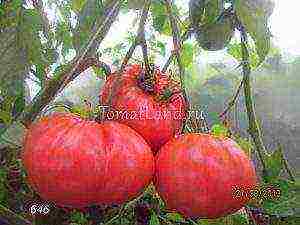Content
- 1 What are ferns and their names
- 2 What other ferns are there
- 3 Ornamental fern species
- 4 Expanding the use of ferns
- 5 1. Common ostrich (Matteuccia struthiopteris)
- 6 2. Polypodium vulgare (Polypodium vulgare)
- 7 3. Adiantum pedatum
- 8 4. Pharmacy comb, or ordinary (Ceterach officinarum)
- 9 5 and 6. Kostenets for every taste
- 10 7. Dryopteris erythrosora (Dryopteris erythrosora) and other species of dryopteris
- 11 8. Derbyanka spicate (Blechnum spicant)
- 12 9. Royal Chistous (Osmunda regalis)
- 13 10. Polystichum setiferum
- 14 Varieties of ferns for the garden
- 15 How to take care of it properly?
- 16 Landing features
- 17 Where can you buy plant seedlings?
- 18 Application in landscape design
- 19 Arrangement of a composition of ferns
Ferns are one of the few ancient plants that have retained a significant species diversity, comparable to what was many centuries ago. While other plants disappeared from the face of the Earth, different types of ferns, on the contrary, developed, forming more and more new forms. Below you can find out which plants are ferns, as well as see photos of fern varieties and their names.
What are ferns and their names
Asplenium, bone (ASPLENIUM). The family of aspleyovs.
An interesting group of decorative ferns for flower growers is represented by rocky species, including asplenium (kostenets). Speaking about what kind of ferns there are, the name of this species is mentioned one of the first, since the Kostenets became widespread in central Russia. Aspleniums are irreplaceable on shady rockeries. Their small graceful bushes of feathery openwork leaves extending from a short vertical rhizome are stably decorative.
Types and varieties:
Wall asplenium can be found on the walls of old stone monasteries in central Russia. The leaves are graceful, rounded, leathery, wintering, form a turf 5-10 cm high, growing right in the cracks of the stone.
Asplenium north (A. septentrionale) is a small (5-10 cm) fern of rocks of Northern Europe and Asia, with simple, elongated narrow leaves.
Asplenium hairy (A. trichomanes) - the most shade-loving, moisture-loving and thermophilic of the aspleniums. It has graceful evergreen feathery rounded leaves 10-20 cm long.
Growing conditions. In shade and partial shade, under the canopy of trees, among stones, on soil rich in lime, well-drained. Cover with leaves for the winter.
Reproduction. Asplenium sods grow rapidly and tolerate division well in early spring. Stocking density - single.
Used in shaded rockeries. A. hairy looks interesting in containers installed in the shade. For the winter, plants should be covered with a leaf.
Woodsia (WOODSIA). The family of aspleyovs.
Graceful undersized (3-20 cm) rocky forest ferns with narrow fluffy dense leaves extending from a short horizontal rhizome. Bushes grow very slowly, live a long time (up to 30 years).
Types and varieties:
In central Russia, it is successfully cultivated Woodsia Elbe (W. ilvensis) is a spectacular low bush with pale green leaves. This fern got its name because of its habitat - plants can often be found on the banks of the Elbe. Another interesting view is woodsia multi-row (W. polystichoides).
Look at the photo: this fern has dense feathery narrow leaves.
Growing conditions. Shady areas with rocky, neutral or alkaline soils, does not tolerate overdrying.
Reproduction. By dividing the bush in early spring and late summer.
Woodsia multi-row - rock fern of the Far East. It grows very slowly.But, being planted in suitable conditions (partial shade, placers of crushed limestone, good moisture), it easily takes root and grows normally.
Woodsia Elbe over mountains and rocks it goes far to the north - to the Arctic. It grows well among calcareous stones and in central Russia.
Kochedyzhnik (ATHYRIUM). The family of aspleyovs.
The genus contains about 200 species. Basically, these are large forest ferns with a thick short rhizome and two to three times feathery thin leaves. The bush is dense, high (up to 100 cm). The leaves of this fern species are delicate, delicate, new ones grow all season, so the bushes always look young and fresh.
Types and varieties:
More often than others are grown Female kochedyzhnik (A. filixfemina), a common plant in the forests of central Russia.
Kochedyzhnik chinese-reddish (A. sinense = A. rubripes) is a fern from the forests of the Far East.
Pay attention to the photo of this fern above: its name fully corresponds to the color of the petioles.
Growing conditions. Kochedzhniki are plants in shady, moderately humid areas with common garden soils. Plants grow in one place for a long time without transplanting and dividing (up to 15 years), do not need fertilization. They form abundant self-seeding.
Reproduction. Propagated by dividing the bush in early spring and late summer. The best planting material is seedlings. But for an ordinary gardener, the reproduction of ferns by spores is a troublesome and lengthy process. Planting density -5 pcs. per 1 m2.
They are planted in groups among low ground cover, as part of wooded "natural gardens".
Female kochedyzhnik differs in delicate delicate thinly dissected light green leaves, collected in a bunch. New leaves grow throughout the season, giving the fern a fresh look even in dry summers. In early autumn, with the onset of frost, the leaves turn yellow and die off.
Multilayer (POLYSTICHUM). The family of aspleyovs.
This variety is most commonly found in the shady forests of Europe, the Caucasus, East Asia and North America. In forests, they occur sporadically, nowhere forming large spots. The leaves are beautiful, dark green, dense, extending from a short thick rhizome. The name of this fern species is explained by the fact that the leaves of the plant are arranged in many rows.
Types and varieties. Of the numerous species and varieties of the mnogoryadnik, the conditions of central Russia correspond to a greater extent:
Brown's multi-rower (P. braunii) - with shiny leathery wintering leaves.
Multilayer three-part (P. tripteron) - plant of the forests of the Far East, leaves are not wintering.
Multi-row bristle (P. setiferum) is a tall (up to 100 cm) fern with dark green wintering feathery leaves with a serrated edge.
As you can see in the photo and the description of this type of fern, each clove of the plant ends with a bristle.
Growing conditions. Shady areas under the canopy of trees, forest soil, drained, loose, neutral, moderate moisture.
Reproduction. By dividing the bush in early spring or late summer.
Real perennials can grow up to 30 years without transplantation. Stocking density - single.
Eagle (PTERIDIUM). Family of Cyateins.
Orlyak ordinary (P. aquilinum) - grows on all continents of the Earth, forming thickets in the tundra and dry forests of Europe, among the bushes of Australia and on the wastelands of South America, it is absent only in the steppes and deserts.
Pay attention to the photo of this fern species: a large leaf with a rigid trifoliate plate high (up to 150 cm) raised above the ground on dense petioles. The deeply located (up to 50 cm) branching rhizome ensures rapid growth and formation of overgrowth. Decorative from May (the beginning of leaf growth) until the first frost, when the leaves acquire a bronze tint.
Able to quickly capture territory. Difficult to eradicate.
Growing conditions. Any loose, especially sandy, soil, in partial shade and in open places.
Reproduction. Sections of rhizomes with buds regenerate in early spring and late summer. Planting density - 16 pcs. per 1 m2.
Forms high, beautiful spots on the edges, along the fences. Its growth should be artificially limited by digging boards, etc., into the soil. Spring-flowering plants can be planted in the bracken thickets: crested beetles, anemone, snowdrops, bluewoods.
Remember: bracken is an aggressive plant capable of rapid growth. Therefore, its planting should be fenced off with mechanical obstacles, for example, roofing material or slate, dug into the ground to a depth of 20-30 cm.
The name of the common bracken is associated with the shape of its leaf: pteris in Greek means "wing", and aquila in Latin means "eagle".
What other ferns are there
Osmund, Chistostom (OSMUNDA). The osmund family.
The largest ancient ferns of the temperate zone of the Earth. Once grown on all continents, they survived only in the forests of the Caucasus, East Asia and North America.
As you can see in the photo of plants, the osmund fern is distinguished by large feathery light green shiny non-hibernating leaves growing from a short dense rhizome. In especially favorable conditions, osmunda leaves can reach 200 cm.
Types and varieties. In the gardens of central Russia, it is recommended to grow:
Osmund the Asiatic (O. asiatica = O. cinnamomea).
Osmund Clayton (O. claytoniana) - differs in the position of spore plants in the middle of a green leaf.
Royal Osmund (O. regalis) has a powerful, superficially located rhizome, from which grow large (up to 180 cm) shiny dense leaves, forming a curtain, in the spring when regrowth the leaves are reddish, in summer light green, in autumn - golden.
Growing conditions. Osmund are plants of wet peaty, marshy, semi-shaded places.
Reproduction. In the spring, before the leaves grow back, the rhizome is divided, the lateral buds are separated and transplanted for rooting. Rooting is slow and the reproductive rate is very low. Stocking density - single.
Bubble (CYSTOPTERIS). Asplenium family.
The most undemanding of the small rock ferns. Its graceful pale green non-hibernating feathery leaves adorn shady flower beds all summer long.
As you can see in the photo and the description of this fern, the leaves of the bubble wort are covered with small bubbles.
Types and varieties:
Bubble gallbladder (C. bulbifera) is a rock plant from the forests of eastern North America. Delicate green, complex-pinnate, deltoid in shape, the leaves grow up to 80 cm long. The plant multiplies rapidly due to the numerous rounded buds (bulbs) that form on the underside of the leaf. At the end of summer, the bulbs separate, take root, and a young bush grows from them.
The bladder is fragile (C. fragilis) - 10-20 cm high, often found on rocks in the forest belt of the mountains of Europe and Asia. Oblong thin feathery leaves emerging from the bud on a thin rhizome, collected in a dense bunch. It is undemanding, often self-seeding.
Growing conditions. Bubbles are grown near stones, on sandy and gravelly soils with good drainage in shaded areas. They do not tolerate too fertile (especially manured) and moist soils.
Reproduction. Natural self-seeding and segments of rhizomes with renewal bud (early spring or late summer). They grow very slowly. Planting density - 16 pcs. per 1 m2.
They are used in shady rockeries, where the openwork of the leaves emphasizes the monumentality of the stone.
Bubbleweed grows well in containers set in the shade. Here, its leaves hang over the edge of the container, forming an openwork canopy. Especially decorative against the background of an inert layer of pebbles, crushed stone, gravel, etc.
Scraper (CETERACH). Asplenium family.
Speaking about what other ferns there are, one cannot fail to mention the pharmacy comb (C.officinarum) is the only dry-loving and light-loving fern from the Mediterranean mountains. In Crimea, it grows on dry limestone rocks, in cracks in stones. Leathery pinnately incised evergreen leaves are naked on top, covered with brown scales below, form a bush, height 5-10 cm. In drought, the leaves roll up with scales upward, as if protecting themselves from drying out. The rhizome is short, extending into the cracks of the rocks.
Growing conditions. In central Russia, it can reliably grow and develop in sunny rocky areas, on crushed limestone, with good drainage. But it grows very slowly.
Reproduction. Sections of rhizomes with a bud of renewal (in early spring and late summer). Stocking density - single.
Used to create a stable ground cover in the shade under the canopy of trees.
Ostrich (MATTEUCCIA). Fern family.
Common ostrich (M. struthiopteris) is a plant in the moist forests of the temperate zone of the Northern Hemisphere. One of the most beautiful ferns. Its tall, strict funnel-shaped bush can be up to 150 cm high.
Look at the photo: The name of this fern variety is explained by the fact that its soft green, feathery, with linear leaves, the leaves resemble an ostrich feather. They grow back with the establishment of warm weather, die off in early autumn. At first, these are fluffy, curled inward, like a cam, shoots, which gradually straighten out. In August, brown shoots with spores grow in the center of the bush, which gives the plant even more originality. Due to the presence of long rhizomes, it quickly forms a thicket.
Growing conditions. Grows well on moist (even wet) peaty soils in the shade and partial shade. Cold hardy, undemanding plant.
Reproduction. Sections of rhizomes with a bud of renewal (early spring and late summer) and young bushes. Tolerates transplantation well. Stocking density - single.
Telipteris (THELYPTERIS). The telipteris family.
Marsh telipteris (T. palustris) is a beautiful, low (35-60 cm) creeping fern species growing in the humid forests of the temperate zone of the Northern Hemisphere. They form thickets with a height of 40-70 cm. Leaves are double-pinnate, extended at the top, thin, yellow-green.
Growing conditions. Shady places with loose peaty moist soils.
Reproduction. Sections of rhizomes in spring (before the leaves begin to grow back) or at the end of summer. Planting density -9 pcs. per 1 m2.
Used to create a ground cover in shady, damp places, near water bodies, under the canopy of trees.
Phegopteris (PHEGOPTERIS). The family of asplenius.
Phegopteris binding (Ph. Connectilis = Thelypteris phegopteris) - more often than other ferns found in the forests of central Russia. Low (up to 40 cm) fern. Due to the presence of a long branching rhizome, it forms a dense, rapidly growing ground cover of light green deltoid leaves on petioles.
Growing conditions. Shaded areas with loose, moderately moist soils.
Reproduction. Self-sowing and segments of rhizomes with a bud of renewal in spring (before the appearance of leaves) and at the end of summer. Planting density - 9 pcs. per 1 m2.
Dryopter (DRYOPTERIS). Shytovnik family.
Talking about what kind of ferns there are, they often recall the thyme, which is widespread throughout the temperate zone of the Northern Hemisphere, especially often in coniferous forests. Their leaves are double-pinnate, extending from a short oblique rhizome surrounded by the bases of leaf petioles.
Types and varieties. More often than other species are cultivated:
Male shieldworm (D. filixmas) is a large (up to 110 cm) forest fern with leathery, shiny, dark green wintering leaves, collected in a bowl.
Austrian shieldworm (D. austriaca = D. dilatata) - 80 cm high; SCH. marsh (D. thelypteris) is a plant in forest bogs and coastal habitats.
Linnaeus's shieldworm (D.linneana = Gymnocarpium dryopteris) - forms thickets up to 100 cm high from small, triangular-shaped pale green leaves, prefers loose, well-moistened, peaty soils. Shypitniks in shady places often form self-seeding.
Growing conditions. Forest dwarf plants are undemanding plants. Planted in the shade on ordinary garden soils, they delight the gardener for many years (up to 20 years), tolerate both excessive moisture and drought well.
Reproduction. Young bushes and dividing the bush. Planting is done in early spring (before young leaves start to grow) and at the end of summer. Planting density - 5-9 pcs. per 1 m2.
Onoclea (ONOCLEA). The family of aspleyovs.
Onoclea sensitive (O. sensibilis) is a fern from the swampy forests of East Asia and North America. Light green, dense, shiny, dissected deltoid leaves rise 40-50 cm above the ground, forming thickets. The long branching rhizome grows 5-10 cm annually and promotes the formation of dense spots.
Growing conditions. Low, well-moisturized areas in the shade. The introduction of peat is useful.
Reproduction. Sections of rhizomes with a bud of renewal (early spring, late summer). Planting density - 9 pcs. per 1 m2.
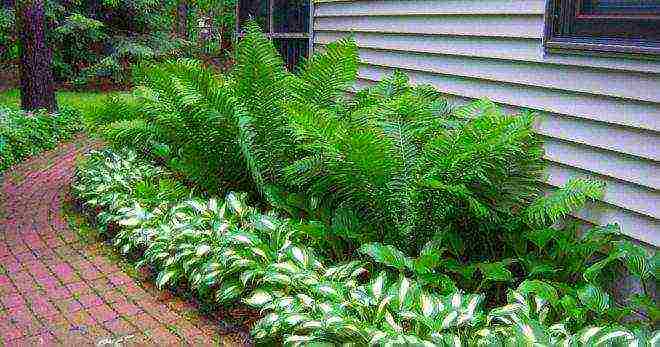
Gone are the days when ferns reigned on the planet, their species amazed with a variety of leaf shapes and inhabited all the expanses of the planet, and now they form thickets mainly in damp and warm countries. For the modern gardener, original plants are of decorative value and can perfectly decorate the interior.
Ornamental fern species
What is the difference between ferns - all their species have not the usual leaves, but the original pre-shoots (fronds), which in the process of evolution became flat. The second interesting quality is the ability to reproduce, both vegetatively and by spores, which makes these organisms ubiquitous creatures. There are tall and herbaceous forms of plants; in forests of a temperate climate, they have a predominantly short stem in the form of a rhizome, completely buried in the ground. In a fertile environment, frond growing above the ground can reach enormous sizes.
Europeans are mainly interested in the decorative qualities of these ancient plants, so gradually people began to distinguish between garden ferns and indoor species. They are able to perfectly decorate the site, be the backdrop for flowers, contrasting with the usual deciduous plantings. In tropical countries, powerful tree-like forms serve as a source of building material, and roots and shoots with a starchy core are used by some tribes for food.
Depending on the species, ferns are used to decorate the garden in various ways. Small varieties are planted in containers, making them mobile exotic gardens. Ampel forms have recently become more and more fashionable, so hanging baskets with Pelleia or other tiny bushes are perfect for this purpose. They can perfectly plant balconies, loggias, city windows, terraces.
Ferns of any kind are used in the gardens, which normally survive in the given climate. Traditionally, they are planted next to boulders, used to equip Japanese gardens, decorate the park landscape in a natural style. Ferns look best near streams, on the banks of lakes or rivers. Bamboo, Japanese primrose, sedge, conifers, irises, rhododendrons, and forest species of bulbous plants can be planted next to them. Fern rhizomes quickly creep and press neighbors, it is recommended to limit their growth or set aside spacious areas for composition.
Davallia fern
Considering a variety of ferns, their types and names, most gardeners always pay attention to davallia, which has original triangular fronds.This plant can be instantly recognized by its characteristic aerial roots, which tightly entwine the pots, like the furry legs of a funny animal. There are several interesting species of this fern with high decorative qualities:
- Davallia dense - fronds are triangular, densely pinnate, reaching a length of 50 cm and a width of 25 cm, the length of the petiole is up to 30 cm. The rhizome is thin, densely covered with filamentary scales.
- Davallia Canary - incredibly decorative ferns with leaves up to 45 cm long. The petioles of the Canary species are straight, the roots are beige-brown, well pubescent, tightly braiding the container with the plant.
- Davallia bladder - interesting and beautiful ferns, Canary and bubbly species are similar in appearance, but the leaves of the last plant are slightly swollen and a little shorter (up to 25 cm). Brown sporangia on the tops of the pre-shoots are clearly visible.
- Davallia Marisa - the height of the bushes is up to 25 cm, the villi on the roots are light, suitable for indoor growing.
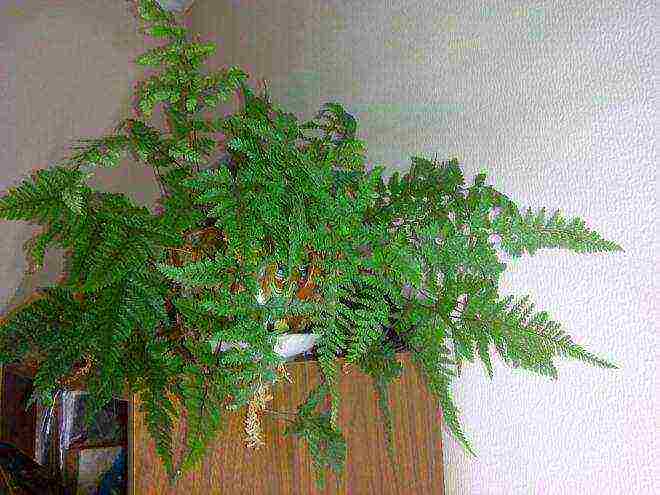
Fern centipede
If you are trying to find winter-hardy ferns, plant species for open ground, then planting on the site of the common centipede will be the best option. Her leaves are leathery, 20 cm long, the rhizome is golden brown, creeping. Sori are attached to the leaves in two rows along the central thread. The common centipede is an edible fern with sweet roots used in folk medicine in many countries. Essential oils are extracted from them and medicines are made.
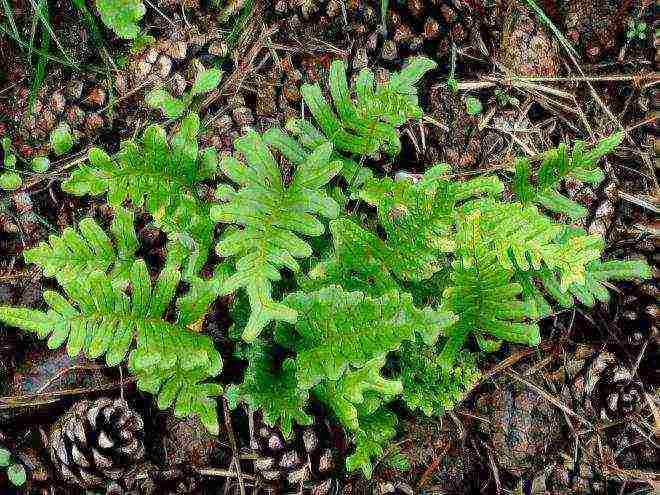
Fern maidenhair
Among all ferns, maidenhair is considered the most delicate, it is often called among the people by the noble name "Venus of the Hair", often used to decorate wedding bouquets. The only drawback of this type of ornamental plant is its rapid wilting after cutting. Garden maidenhair ferns grow up to 60 cm high, have creeping black roots, frond plaques are pinnate, reaching a length of 40 cm. The wai segments have an original ovoid shape, thin, wedge-shaped at the base.
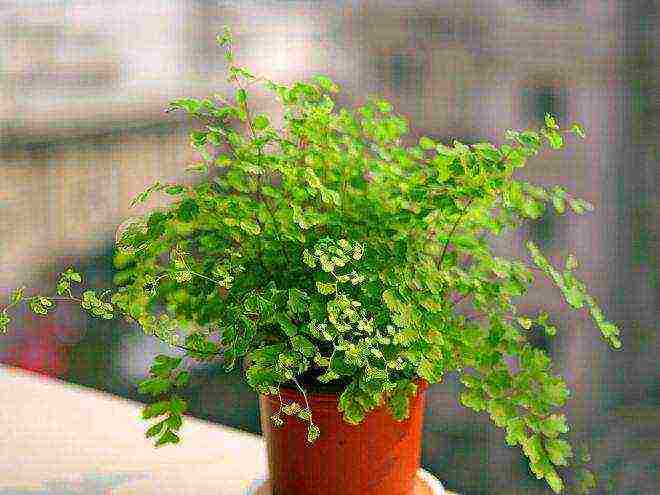
Fern pteris
Outwardly, pteris stands out sharply among the entire family of ferns, other species and varieties cannot boast of such original pinnately dissected pterygoid leaves and a rich color palette. There are patterned forms, yellow-green, white-green, variegated. The most popular varieties of pteris:
- tape,
- long-leaved,
- trembling,
- multi-cut,
- xiphoid.
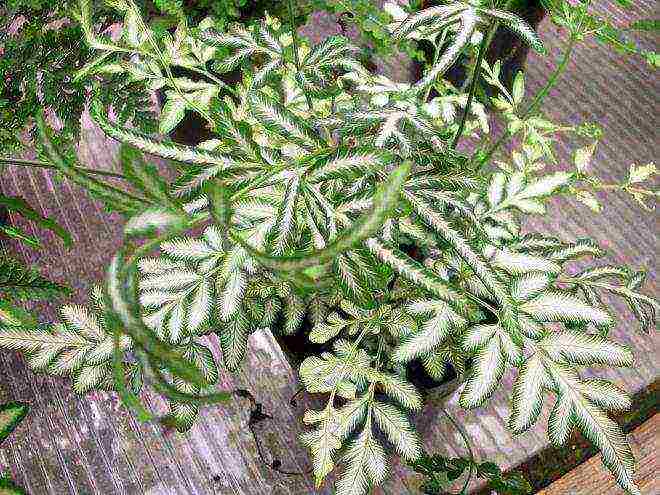
Fern grapefruit
The grape beetle deservedly received its name because of the characteristic type of spore-bearing part of the shoot that grows from the root of the frond, and ends with a panicle at the plant, where disputes ripen and await their time. This fern in the gardens is represented by species that are absolutely not afraid of the harsh climate, and inhabit many regions of Russia like a wild culture. The main varieties of grape beetle:
- lanceolate,
- Virginia,
- multipart,
- crescent,
- chamomile,
- simple,
- strong,
- northern,
- mountain,
- southern,
- Jenman's grapefruit.
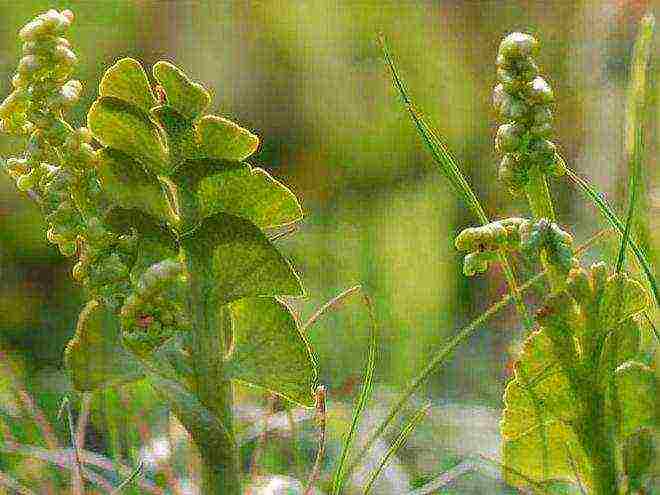
Fern leaf
This is another plant that visually has little resemblance to the usual ferns. An unusual look is given to it by whole leaves of a lanceolate shape, up to half a meter long and about 7 cm wide. Sori are attached from the reverse side in the form of transverse symmetrical stripes of grayish color. The following types of leaflets are used in horticulture:
- common leaf fern (centipede),
- leaf undulata - with wavy leaves,
- leaflet marginatum - with lobed fronds,
- leaf cristatum - comb-shaped,
- crispa leaf - with perforated leaves,
- Ramo Cristatum leaf - gorgeous bushes with highly branched wavy leaves,
- Japanese leaf - bushes with a wide rosette and leather lanceolate-belt-like leaves up to 40 cm long.
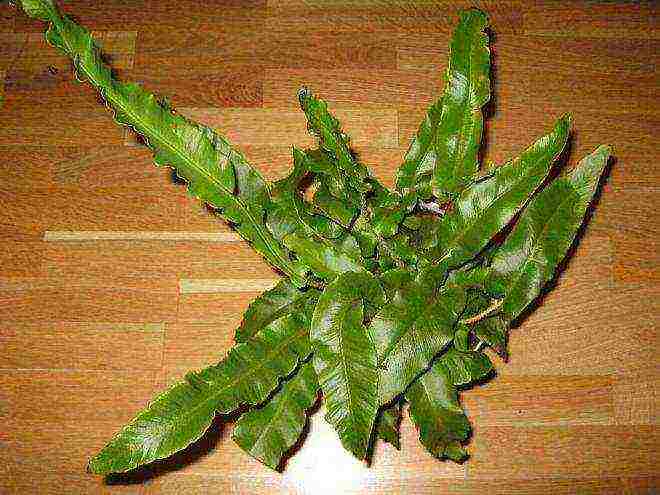
Fern Pelley
Among all types of ferns, the description of this miniature plant with delicate round leaves always arouses genuine interest in flower growers. It looks perfect when grown as a potted crop due to its compact size and original leaves. In different countries, the Pelley fern is called a push-button or button fern, the length of its shoots reaches 40 cm, but when grown indoors, they are limited to 15 cm.For your home, you can purchase several varieties of this unusual plant:
- Pellea is dark purple,
- The pellet is green
- The pellea is beautifully dark,
- Pellea is naked.
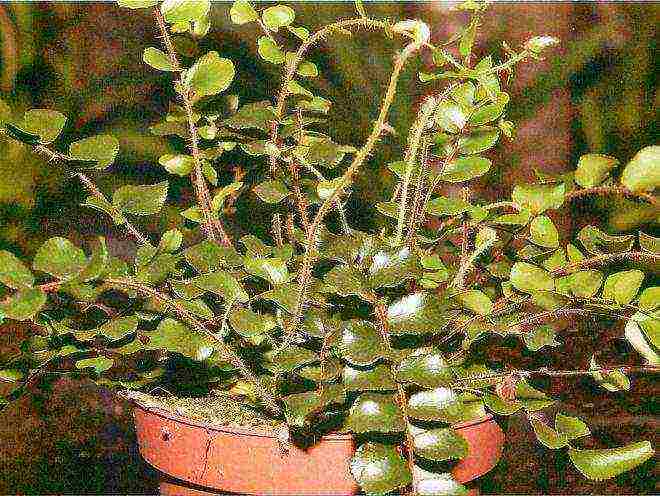
Bracken fern
The original bracken fern plant is easy to distinguish from other varieties in the forest. Its shoots grow from a horizontal rhizome not in bushes, but singly at a distance of 10 cm. The underground shoots are deep and can survive strong fires. A distinctive feature of the bracken is that it has shoots bent in the form of a snail in the ring stage. The lower part of them remains bare, and the top turns into gorgeous leaves. Multi-colored ferns look spectacular in the interior - types of bracken with dark green, brown or even purple shoots.
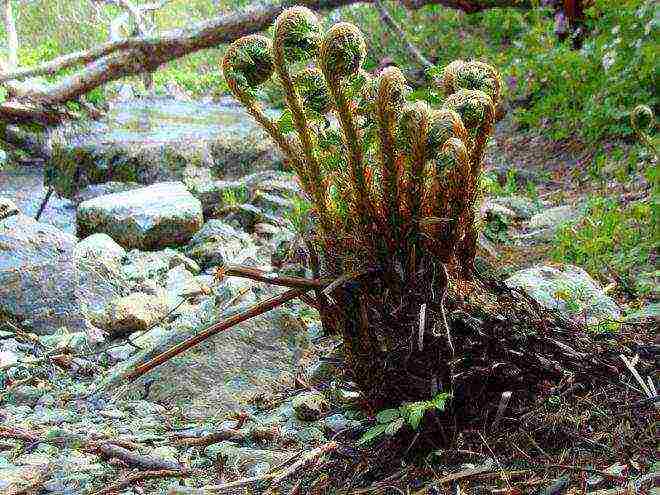
Fern asplenium
Studying the question of what types of ferns exist, you will definitely be interested in this plant. It has long (up to 75 cm) pale green whole leaves with wave-like curved edges. They look glossy and durable, but if handled carelessly, they can instantly suffer from minor exertion. Asplenium has been cultivated in indoor floriculture since the 19th century, and was previously used in the treatment of the spleen. Popular varieties of asplenium:
- nesting,
- onion-bearing,
- antique.
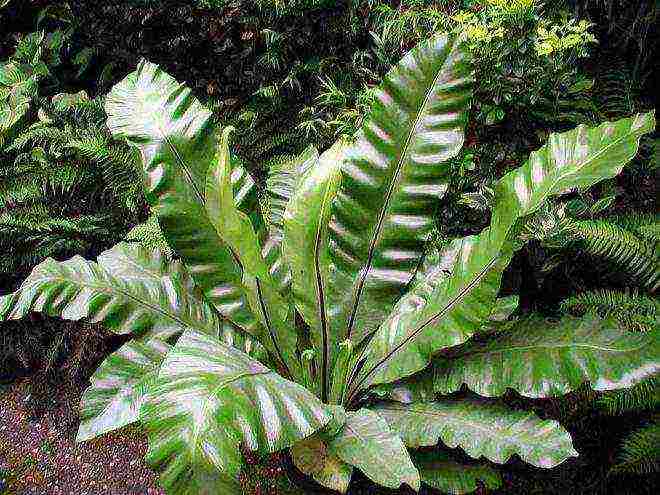
Fern ostrich
This species slightly resembles ostrich feathers, which open up to one and a half meters in length in the form of a decorative funnel. Creeping horses gradually give new offspring, forming dense thickets over time. In the natural environment, the garden ostrich fern can be found in Siberia, the Far East, and the Caucasus. He loves to grow in damp forests and river floodplains. In home gardens, it should be planted in shady areas, in damp areas, near fences and decorative boulders.
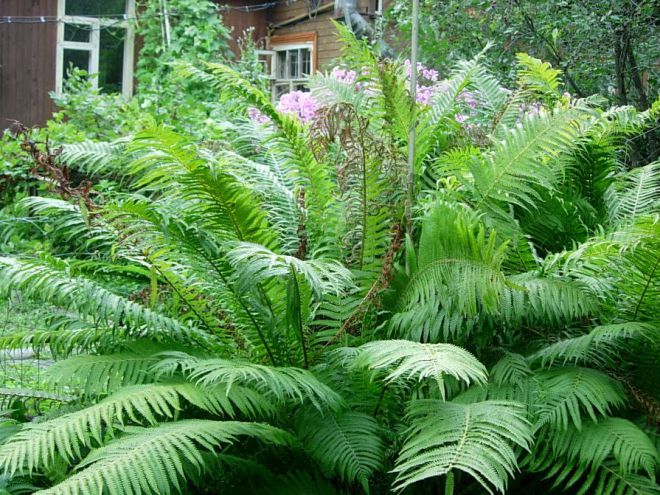
Fern fern
The rhizome of this species is short, cylindrical, 10 cm or more thick. It is covered with tubercles, which form the remains of petioles of old leaves. Above, the male fern fern is decorated with a rosette with a powerful bundle of dark green leaves up to a meter long. Snail-like young fronds grow and unfold during the summer. The thyme is poisonous, but it is used in medicine as an anthelmintic, cleansing, anesthetic. In the absence of experience, experimenting with the roots of this fern is dangerous.

Fern chistmouth
There are different types of chistomouth fern, the description of which is slightly different. The royal (stately) variety of plants in the spring has reddish leaves up to 2 m long, then their color becomes light green, and golden by autumn. The Asian subspecies is distinguished by red-colored leaves, which turn orange by September, creating original flaming areas in the forests. The type of fern Chistus Keithon is rare, the plant looks like an Asian subspecies, but its sporanga will grow from the center of the bush, and does not grow separately.
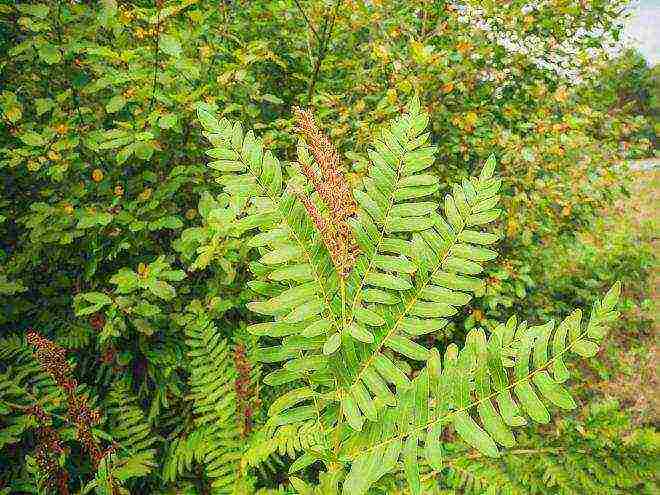
Ferns are unique and irreplaceable plants for landscape design. There are no better decorative deciduous crops for decorating shaded areas of the garden, plants that allow such an effective play on the motives of the landscape style. But limiting the use of ferns to compositions with natural charm would be a big mistake. After all, ferns can become an interesting design element even on flower beds, ridges or alpine hills.
Polystichum polyblepharum
Expanding the use of ferns
Ferns with their mysteriousness, majesty, antiquity and special character are able to revive the shady corners of the garden and radically change the nature of the design. There are no plants that are better at creating a calm green backdrop for relaxation, offering such rich shades of green, or boasting more sophisticated and filigree shapes. But at the same time, ferns for many remain plants that in landscape design can only be used in natural-style compositions or where you need to fill in the soil under the canopy of large trees. But ferns are plants no less versatile than the main herbaceous perennials from among decorative deciduous crops. They are able to impress with a variety that opens up new possibilities for the selection of species for various decorative tasks. Beauty, grace, special charm of ferns are revealed not only in secluded corners. It is high time for ferns to come out of the shadows, literally and figuratively. Despite their shade-loving nature, ferns do not have to be planted only where other garden plants cannot settle: there are also places with secluded lighting on flower beds. And it is certainly not worth considering them as plants that will not find a place in the ceremonial compositions of the garden and flowering ensembles.
The fact that ferns are not usually used in the design of mixborders and flower beds does not mean at all that they cannot be planted in any decorative composition in the garden. The ability of ferns to bring in a kind of oases of peace, mystery, nobility, as well as their filigree lace - all this can set off the beauty of flowering perennials and shrubs no worse than their classic partners. Ferns in the company of ground covers, short or medium-sized soloists, bright or more modest herbaceous crops will reveal their beauty no less than under the canopy of shrubs and trees. In flower beds and other decorative ensembles, ferns can become an unexpectedly expressive accent, a unique tool for introducing architectural contrasts, a means of ennobling and structuring, playing on lines and drawings. Contrasting with most garden plants, ferns are capable of revealing their proud beauty in any company, but they do not detract from the attractiveness and merits of any, even the most humble, plant in the neighborhood.
Ferns in garden design
The only limitation on the possibility of using ferns in the design of flower beds, mixborders or other decorative flowering compositions is imposed by the conditions for growing these plants. Ferns, which belong to the shade-loving species, can only accept partial shade lighting; they must be placed so that they are shaded by larger species from the bright sun, or in places with natural diffuse shading from buildings and fences. Photophilous ferns can live in almost any composition. But much more attention should be paid to the composition and characteristics of the soil. Ferns develop well and grow only in nutritious, containing a lot of organic matter, light in composition and sufficiently moist soils. For them, as for most herbaceous plants, raw, depleted, uncultivated types of soil are not suitable. Before planting your ferns in a flower bed or mixborder, be sure to improve the soil with compost and be sure to use it to mulch the soil around the plant. The only exceptions to these norms are the so-called stony ferns and those species that thrive in nature on rocks and can settle in rock gardens.But even these plants prefer shaded areas and high humidity (when placing them in rocky gardens, make sure that large boulders or stones provide sufficient protective shade).
10 best ferns that can be used for decorative flower beds and flower beds
1. Common ostrich (Matteuccia struthiopteris)
A fern with a height of 80 to 130 cm, one of the most beautiful and largest. Famous for its almost straight, evenly symmetrical leaves and light green color. It's a pleasure to watch the wide fringes of this fern unfold.
Ostriches prefer semi-shady locations and moist soil, have a creeping rhizome and tend to spread on their own.
Common ostrich (Matteuccia struthiopteris) in a flower garden
It is no coincidence that this fern won the title of the classic and the most versatile. Noble, filigree, not too large and bright enough in color, the ostrich offers to introduce the beautiful greenery of ancient garden favorites in a composition with herbaceous perennials. The ostrich is an ideal partner not only for the most popular flowering plants, but also for large flowering shrubs or very large perennials with huge leaves (eg Rogersia).
2. Polypodium vulgare (Polypodium vulgare)
A small but very beautiful fern. Despite the fact that the height of the polypodium ranges from 10 to 30 cm, it seems massive and even somewhat rough. The lobes in the leaves are dense, massive, not so densely arranged, but very symmetrical. The fronds are directed in different directions, practically lie on the ground, the randomness of the pattern of the fern rosettes adds expression to the compositions. Polypodium looks impressive, but not at all strict. Deeply separated leaves sit on long and slender petioles, are preserved for the winter.
This fern prefers semi-shady or shady locations and will only grow in sand or unknown soil with good drainage.
Polypodium vulgare
Polypodium is used for compositions in rocky gardens, but it can even be content with a place in a crevice. Its use is not limited only to decorative compositions in rock gardens, flower beds with stone filling, but is also suitable in narrow mixborders near stone walls or in flower beds on slopes.
3. Adiantum pedatum
The height is limited to a maximum of 60 cm. This is an amazingly beautiful carved plant with narrow fan-shaped fronds of leaves on almost black petioles and a light emerald, sometimes seeming almost blue, color. Curly, elegant, it creates a beautiful cover as a ground cover. This is one of the smallest, but by no means the least beautiful ferns. The maidenhair conquers with its filigree beauty and amazing graphics of the bushes. Small fronds with a lace pattern create very whimsical accents.
Maidenhair is able to grow only in shade, tolerates strong shade and needs uniformly moist soil with an obligatory acid reaction.
Adiantum pedatum
The beauty of this fern is beautifully revealed against the background of stones in the alpine hills, in the company of decorative grasses and ground covers on any flower garden or in a mixborder.
4. Pharmacy comb, or ordinary (Ceterach officinarum)
A very original miniature fern, the height of which ranges from 5 to 20 cm. The rounded wai lobes give the plant a similarity to snake patterns. The leaves are evergreen, collected in small, multidirectional rosettes.
This fern prefers to grow in calcareous soils, thrives in the sun and in partial shade. It is the only drought tolerant fern that can be content with a sunny location. The scrubber loves limestone soils.
Pharmacy Scrubber, or Common Scrubber (Ceterach officinarum)
The squeegee in the foreground of any decorative composition will look luxurious. The play of lines and textures in contact with perennials will allow you to create unexpected transitions and bold modern solutions.
5 and 6. Kostenets for every taste
Skolopendrovy kostenets (Asplenium scolopendrium) is a shade-loving compact fern with a height of 10 to 40 cm, whose evergreen whole leaves seem very unusual for this family. The leaves resemble a hybrid of horseradish fern, make a very original impression. The wavy edge and purple sporangia only emphasize the originality of the plant. Kostenets needs shading, it can grow on alpine hills in dry soils.
Hairy bone (Asplenium trichomanes) is also a fairly miniature fern species. Cirrus, narrow, simple frond leaves seem airy, unusual, and are preserved for the winter. At a height of 5 to 30 cm, the Kostenets sets bright vertical accents and impresses with the texture of almost air outlets. This type of fern is capable of settling only in slightly moist soil, in partial shade, it is well tolerated with minimal rocky soils.
Hairy bone (Asplenium trichomanes) Scolopendrium bone (Asplenium scolopendrium)
These ferns can decorate any rocky garden and even rockeries in portable containers. The hairy bone is able to settle in masonry, in narrow crevices on a minimum amount of soil.
7. Dryopteris erythrosora (Dryopteris erythrosora) and other species of dryopteris
Medium-sized ferns, the height of which ranges from 30 to 70 cm. Winter-green almost triangular leaves are distinguished by their density and surprisingly graceful, feather-like structure with pointed lobes at the ends, which gives the plant a more noble appearance. The color with reddish-brown tints seems to be original, from a distance - golden or copper.
This fern loves partial shade or more intense shading. Shieldworms need moist soils, even if their volume is minimal.
Dryopteris rednose (Dryopteris erythrosora)
This type of fern is one of the most beautiful additions to all decorative deciduous herbaceous perennials, which are often used in flower garden design due to the unusual texture and spectacular color of the leaves. The beauty of the host, the cuff and the beast in the company of this fern is revealed in a new way.
8. Derbyanka spicate (Blechnum spicant)
A beautiful fern with a height of 30 to 80 cm with narrow, rather dense frond of a silvery-green color. One of the rare ferns in which spore-bearing and non-spore-bearing leaves are collected in one rosette. The rosette is formed by sterile, once-feathery and hibernating leaves, fancifully lying to the ground and forming tangled ornamental patterns.
Derbyanka is able to settle only on calcareous soils with a sufficient degree of moisture. Prefers partial shade.
Derbyanka spiky (Blechnum spicant)
One of the ferns that can be used not only to decorate flower beds, but also in flower beds, rock gardens, in the design of dry walls or other compositions with stony soils.
9. Royal Chistous (Osmunda regalis)
One of the most airy, lacy ferns, which seems to glow from the inside thanks to its lighter yellowish-green color and almost transparent, filigree fronds. Large and powerful, with bushes up to 2 m in height, it flaunts shiny fronds, changing color from reddish spring to summer green and golden autumn.
Chistous needs moist and even moist peaty soil and a semi-shady location.
Royal Chistous (Osmunda regalis)
Chistous is able to create a surprisingly graceful backdrop for more massive plants. Most often, this culture is used in decorative compositions on the shore of a pond, but it can become an excellent partner for any large and massive plants, create a stunningly beautiful background for large-leaved perennials and shrubs, and is suitable for decorating damp flower beds.
10. Polystichum setiferum
A large and quite variable fern, which in favorable conditions can reach a meter in height.The leaves are dark green, filigree, dense, with a clearly visible sorus and a serrated-bristle edge, wide, most often curving in arcs and spreading. The rosette seems sloppy, but very elegant.
Despite his shade-loving nature, the multi-rower is not at all afraid of the sun. This fern prefers light soils with high nutritional value.
Polystichum setiferum
The fern is able to become an air partner for absolutely any flowering herbaceous perennial, especially for summer-flowering species. Modest in any other place, this fern gives the impression of a somewhat sloppy, loose, it slightly creeps into the territory of flowering plants, while creating a surprisingly harmonious contrast and giving an airy lightness to abundant ensembles.
Ferns are the oldest plants that arose on Earth 400,000 years ago, without losing their species diversity. They are rich in various parts of our vast country. They have adapted well to life in a wide variety of conditions. In addition, ferns are very decorative, so they become indispensable in landscape design.
Varieties of ferns for the garden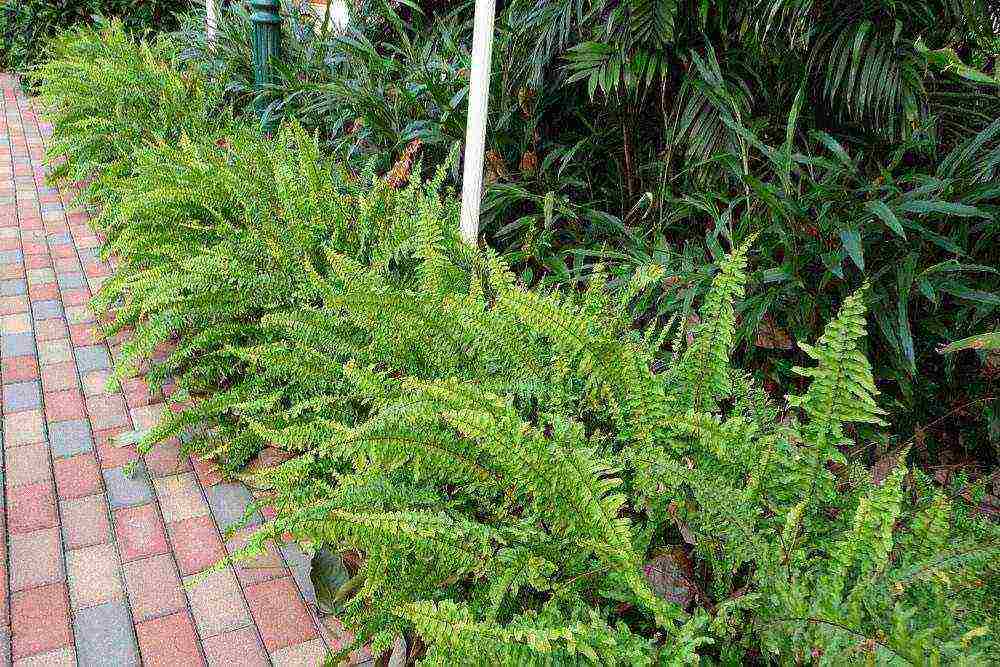
Ferns are representatives of this family. asplenius, which today number more than 10,000 species... Spore plants, they have fronds instead of leaves, do not form flowers and seeds and do not bear fruit. On the underside of the wai, brown dots form in rows - these are sporangia with spores.
The stem is shortened, from which the fronds are fanned out. There is another option: an underground stem (rhizome) forms buds, and from them fan-shaped leaves grow on elongated petioles. The roots are located in the upper soil horizons.
By habitat, the following types are distinguished:
- Forest: grows under the canopy of forests, tall. They love moisture both in the ground and in the air, they prefer acidic soils. They are actively used in landscape design.
- Swamp: are rare, usually grow along the banks of water bodies. They are able to grow in conditions of excessive moisture in the shade or in the sun.
- Rocky: feel good among stones. Usually these are dwarf or undersized species. Light and soil requirements differ from species to species.
Let's get acquainted with the most decorative representatives of this unique plant family:
| title | characteristic |
| Common ostrich | Widespread. The leaves are large and delicate, reaching a meter or more. The growth rate is high. Beautiful at any time of the year. Not picky about growing conditions. |
| Onoclea sensitive | Far Eastern view. Forms a creeping rhizome, due to which it grows rapidly. Leaves are light green, located on elongated petioles, coarsely toothed. Grows up to 60 cm. Not winter-hardy. |
| Maidenhair foot | Leaf blades are pinnate, fan-shaped. Due to the short creeping rhizome, it grows slowly. Propagated by dividing the bush. Height is limited to 60 cm. |
| Japanese kochedyzhnik | Far Eastern view. The leaves are feathery, have a silvery and pink bloom, due to which they look spectacular. Rosette of leaves from 20 to 60 cm. |
| Centipede leaflet | It has oblong, not dissected leaves with a shiny sheen. Bred varieties with a corrugated leaf blade. Hibernates under light cover. |
| Male shieldworm | Formed by a high, funnel-shaped rosette of leaves. There are a large number of decorative varieties. Looks good as a stand-alone plant. |
| Royal Osmund | Slowly growing, forming a funnel of large, broadly lanceolate leaves. It reaches a height of 1.2m. Beautiful in autumn with orange-yellow fronds. |
These are species, each of which forms many varieties, including garden forms. Each gardener can choose interesting varieties for the garden, since the choice is great.
How to take care of it properly?
This is an unpretentious plant, the care of which is not difficult. It does not require feeding, pests bypass it, so we just have to enjoy its beautiful forms.
But there are several requirements for care that must be met:
- After planting in the first year of growth regular watering - an important condition for the further development of the plant. At the same time it is necessary to carry out spraying.
- Mulching after wateringbut will retain moisture in the soil, strengthen the root system. Grass, leaves, peat, pine needles can be used as mulch. In the spring, you should not remove it, it will become an excellent fertilizer for the shoots growing out of the ground.
- Looseningsince ferns love loose soil. But loosen carefully, the root system is shallow.
- Top dressing is optional, but they will not bring harm. The culture is responsive to mineral and organic fertilizers, which are best applied in the spring.
- The bush is renewed after a few years: remove deformed, yellowed fronds. Do this carefully so as not to damage the plant.
- Many ferns hibernate without shelter, without freezing... The exceptions are "Listovik" and "Kochedyzhniki" and a number of others, which require shelter for the winter.
It is important to know: The culture has high requirements for soil moisture, so it should always be moist. In addition, soil acidity requirements may vary from cultivar to cultivar.
Landing features
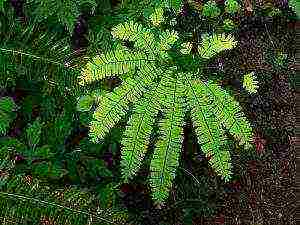 It's worth starting with choosing a place. This is a partial shade with well-moisturized and light soils. This combination would be perfect. But sunny meadows for ferns are not suitable. Here they will grow small and weak.
It's worth starting with choosing a place. This is a partial shade with well-moisturized and light soils. This combination would be perfect. But sunny meadows for ferns are not suitable. Here they will grow small and weak.
It is important to determine the distance to the next plant. The ancient culture loves space so that other plants do not interfere with growth.... But here everything will depend on the size of the fern, so you will have to approach the issue individually.
Potted plants can be planted at any time of the year. Before planting, immerse the pot in water until it is completely moistened, water the planting hole and start planting. Spread the roots in the hole, cover with soil, pour soft (settled) water.
It is important to know: When planting on a rhizome, there should be a small amount of the soil in which it previously grew. Lower the root into the planting hole carefully, being careful not to touch or damage the frond. Otherwise, the fern will not look decorative for a long time.
Where can you buy plant seedlings?
If desired, the crop can be grown from spores. But they are small, and the process is quite laborious. Therefore, we will look for where you can buy grown specimens:
- garden centers or flower shops,
- online stores "Garshinka", "Flower yard", "Gardens of Russia", "SF Garden", the site of Igor Sukhanov, and others. Therefore, there will be no problems with the order. Prices differ depending on the variety and age -within 150-500 rubles.
Application in landscape design
 When creating a composition from different cultures (floral and decorative leafy), several important points should be considered:
When creating a composition from different cultures (floral and decorative leafy), several important points should be considered:
- Fern size. Plants planted nearby should be the same size or shade them.
- His love for moisture allows him to plant a spreading "bush" next to water bodies. It not only adds decorative effect, but goes well with other water-loving plants.
- His shade tolerance... Feel free to decorate the north side of the house or shaded areas where other crops cannot grow.
- Use of stony dwarf species... There are varieties created specifically for rockeries or rocky hills.
- Variety of varieties... They can be combined in size, color, leaf shape. You can create beautiful compositions from different ferns.
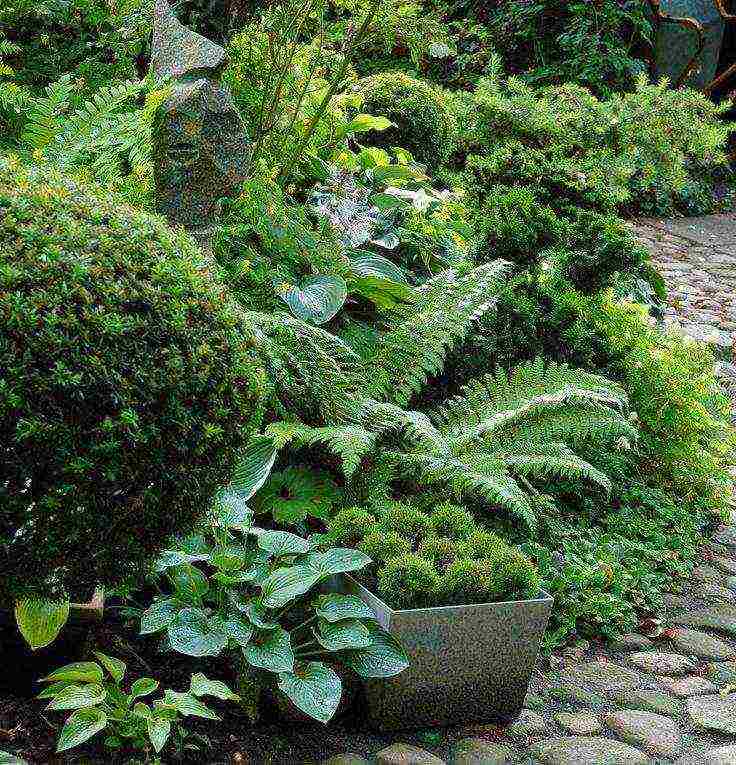
Ferns are very often combined with hosts.
Choose the varieties of garden ferns to your liking, thinking over the created compositions in advance. Dare, experiment, try! Moreover, it is not just an ancient and decorative look that has fallen into your hands. Its distinctive feature is shade tolerance and unpretentiousness. It will revive the most secluded corner where other cultures cannot grow.
Arrangement of a composition of ferns
This video from Garden Escapes Landscape Design features a backyard lavishly decorated with various types of ferns. There is also a decorative pond. Perhaps such a solution is not for the domestic climate, but it is quite possible to implement something similar in a shaded area of the garden with the help of available species and analogues.
